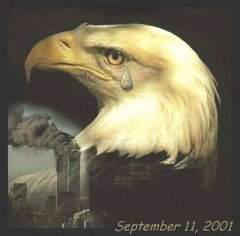Hydra of War

Radical Islam will ensure the constant replacement of whatever terrorists we kill.
by Raymond IbrahimNational Review Online
Is the leader of al Qaeda in Iraq, Abu Hamza al-Masri, dead? Iraqi authorities just proclaimed that he was recently killed due to infighting. But al Qaeda-related websites beg to differ: “[H]e is still fighting the enemies of Allah.” And the U.S. is unsure: “I [Lieutenant-Colonel Garver] hope it’s true; we’re checking, but we’re going to be doubly sure before we can confirm anything.” The most important question, however, isn’t being much addressed: Would the death of al-Masri — or any other Islamist leader — make any difference, at all?One is reminded of all the hubbub surrounding the killing of al-Masri’s infamous predecessor — the head-chopping Abu Musab al-Zarqawi — nearly one year ago. Then, almost every major politician, including President Bush, Prime Minister Blair, and Iraq’s Prime Minister Maliki, gave some sort of victory speech, some highly triumphant, others more cautious.But if Zarqawi’s death did not hinder al Qaeda’s highly influential presence in Iraq — estimated to have grown since then — will al-Masri’s? Indeed, would the death of Aymin al-Zawahiri or Osama bin Laden himself have any tangible affects on the growth, spread, and goals of radical Islam? Recent history provides a lucid answer to these questions.
Consider the progress of the Muslim Brotherhood, the largest and oldest Islamic fundamentalist organization today, which Aymin al-Zawahiri, al Qaeda’s number two man, joined when he was fourteen years old. Founded in Egypt by Hassan al-Banna in 1928, it originally boasted only six members. In the following decades, in part thanks to the radical writings of one of its premiere ideologues, Sayyid Qutb — whom al Qaeda quotes liberally in their many writings — the Brotherhood, though constantly clashing with Egypt’s government, grew steadily.As leaders, both Banna and Qutb were eventually targeted and killed by Egypt’s government — the former assassinated and the latter executed. Far from dying out, however, the Brotherhood continued thriving underground for many more decades. Then, to the world’s surprise, the partially banned, constantly harassed Brotherhood managed to win 88 out of 454 seats in Egypt’s 2005 parliamentary elections — making them the largest opposition bloc in the government.After two of its most prominent leaders were killed, after thousands of its members have been harassed, jailed, and sometimes tortured, today the Brotherhood is stronger, more influential, and securer than at any other time in its turbulent history.
Palestine’s Hamas, itself an offshoot of the Brotherhood, is another case in point. Founded in 1987 by Sheikh Ahmed Yassin, Hamas has since been labeled a terrorist organization by several nations, including the U.S., most notably for its many suicide-operations against Israel. Due to Yassin’s figurehead status in Hamas, the Israeli government targeted him for assassination: on March 22, 2004, while the quadriplegic Yassin was being wheeled out of a mosque after morning prayers, an Israeli helicopter launched two Hellfire missiles at him, killing him instantly.The result? Far from waning or demoralizing, Hamas, like the Brotherhood before them and also to international consternation, went on to win a major landslide election in the January 2006 Palestinian elections, thereby officially representing the Palestinian people.
Then there is the Ayatollah Khomeini — the original poster-boy of radical Islam. Overthrowing a secular government and coming to power in Iran’s Islamic revolution of 1979, Khomeini transformed Iran into a theocratic state — precisely what al Qaeda yearns to see happen in the rest of the Islamic world. From influencing the American hostage crisis to issuing a fatwa condemning a novelist to death to taunting the U.S., which he termed “the Great Satan” — for one decade he was the West’s bane.Today, nearly 20 years after the death of the Iranian cleric, not much has changed in Iran. Sharia law still governs; Sharia-endorsed enmity towards the West still thrives. In fact, the only real difference is that the Islamic theocracy’s aspiration for nuclear armaments is nearly realized.
There are countless other examples from both past and present history where popular Islamist leaders were either killed or died naturally and the only thing that changed is that the movement they led grew and consolidated more power.Indeed, the Muslim prophet Muhammad himself was harassed, attacked, and targeted for killing by his non-Muslim neighbors — sometimes in self-defense — and today, 1,400 years after his death, the movement he started claims over one billion adherents.Aymin al-Zawahiri summarizes this phenomenon well. Asked in one of his most recent interviews about the status of bin Laden and the Taliban’s one-eyed Mullah Omar, he confidently replied:
Jihad in the path of Allah is greater than any individual or organization. It is a struggle between Truth and Falsehood, until Allah Almighty inherits the earth and those who live in it. Mullah Muhammad Omar and Sheikh Osama bin Laden—may Allah protect them from all evil—are merely two soldiers of Islam in the journey of jihad, while the struggle between Truth and Falsehood transcends time (from The Al-Qaeda Reader, 182).
According to this statement, which itself is grounded in the Koran, Islamic militants are not the cause of the war. They are but a symptom of a much greater cause — the “struggle between Truth [Islam] and Falsehood [non-Islam]” that “transcends time.”
The problem, then, is not men like Khomeini, Banna, Qutb, and Yassin — nor is it even bin Laden, Zawahiri, or al-Masri: individually killing them off is only treating the symptom, not curing the malady. The root cause is the violent and fascist ideology that motivates them.Unfortunately, this ideology is grounded in a religion and a God replete with eternal damnations and rewards, and thus not easily discredited. None of the aforementioned men initiated the many commands that create strife between Muslims and non-Muslims; they only upheld them.
Immutable verses from the Koran, as well as countless statements from and examples by Muhammad, are the ultimate source of this animosity:“Fight them [infidels] until there in no more seduction and all religion belongs to Allah alone” (Koran 8:39).“When you encounter infidels, strike off their heads” (Koran 47:4).“I [Muhammad] have been made victorious through terror” (Bukhari B52N220).No “radical” Muslim fabricated these verses and others like them. These are understood to be the everlasting words of Allah and his prophet.Even the reckless strikes of 9/11 — where mostly civilians, including women and children, were killed — are justified for al Qaeda through Islam.
While it is true that Islam is generally against the killing of non-combatants such as women and children, there are certain exceptions to this generalization, and al Qaeda often cites them to validate 9/11. For instance, Muhammad authorized his followers to use catapults during their siege of the town of Taif in 630 A.D., though he was aware that women and children were sheltered there. Also, when asked if it was permissible to launch night raids or set fire to the fortifications of the infidels if women and children were among them, the prophet is said to have responded, “They are from among them” (Muslim B19N4321).
The West’s plight vis-à-vis radical Islam is therefore akin to Hercules’s epic encounter with the multiheaded Hydra-monster. Every time the mythical strongman lopped off one of the monster’s heads, two new ones grew in its place. To slay the beast once and for all, Hercules figured out that he could cauterize the stumps with fire, thereby preventing any more heads from sprouting out.Similarly, while the West continues lopping off radicalized “monster-heads,” it is imperative to at least acknowledge the malady — radical Islam — in order to ultimately prevail. Victory can only come when the violent ideologies of radical Islam have been cauterized.But, alas, the Hydra-monster is myth; radical Islam is stark reality.
Raymond Ibrahim is a research librarian at the Library of Congress. His new book, The Al Qaeda Reader, which translates Osama bin Laden's communiqués, will be available in April 2007.
dm Sphere: Related Content











































|